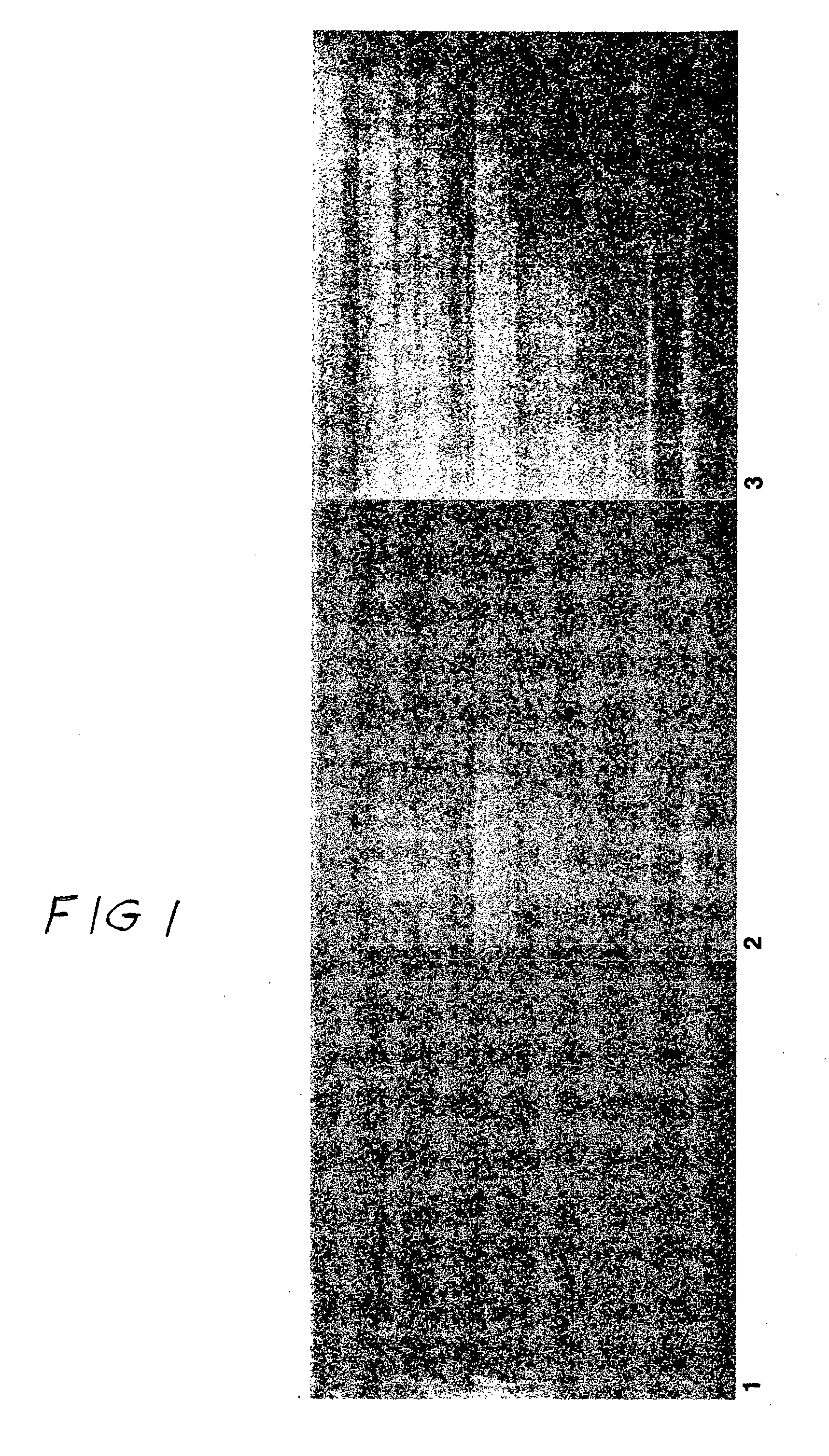Paint with color change additive and method of application and painted substrate
a technology of color change additive and paint, applied in the field of paint, can solve the problems of surface or substrate problems, difficult for painters to determine not only the approximate thickness of the coating applied, problems not only with the shelf stability of such paints, etc., and achieves the effects of improving the shelf stability of the formulation, prolonging the color change time, and great color change additive stability
- Summary
- Abstract
- Description
- Claims
- Application Information
AI Technical Summary
Benefits of technology
Problems solved by technology
Method used
Image
Examples
example 1
[0034] The paint formulation of this example was prepared by adding the following components to a 1-gallon stainless steel mixing vessel. In the grind stage, the following ingredients in Table I were added to the vessel in the same order as listed with the paint formulation-being agitated with an air motor with a 3″ high lift blade.
TABLE IComponentWeight (grams)(i) Water (tap)860.0(ii)(iii) Cellulosic Thickener2.0Natrosol Plus 330 (Hercules, Inc of Wilmington, DE)Preservative6.0Dowicil 75 (Dow Chemical of Midland, MI)Aqueous anionic dispersant19.2Tamol 731 A (Rohm & Haas of Philadelphia, PA)Non-silica defoamer4.0Drewplus Y-381 (Drew Industrial of Boonton, NJ)Disodium phosphate, anhydrous6.0(Albright & Wilson Americas of Richmond, VA)Nonionic nonylphenol surfactant12.0Igepal CTA-639-W (Rhodia of Cranbury, NJ)Nonionic octylphenol surfactant6.0Triton X405 (Dow Chemical of Midland, MI)2-amino-2-methyl-1-propanol solution19.6AMP-95 (Angus Chemical of Buffalo Grove, IL)
[0035] The follow...
example 2
[0040] The paint formulation of this example was prepared by adding the following components to a 1 liter mixing vessel. In the grind stage, the following ingredients in Table VI were added to the vessel in the same order as listed with the paint formulation being mixed with a 1.5″ diameter high lift blade.
TABLE VIComponentWeight (grams)Water (tap)215.0Cellulosic Thickener0.5Natrosol Plus 330 (Hercules, Inc of Wilmington, DE)Preservative / Biocide1.5Dowicil 75 (Dow Chemical of Midland, MI)Aqueous anionic dispersant4.8Tamol 731 A (Rohm & Haas of Philadelphia, PA)Non-silica defoamer1.0Drewplus Y-381 (Drew Industrial of Boonton, NJ)Disodium phosphate, anhydrous1.5(Albright & Wilson Americas of Richmond, VA)Nonionic nonylphenol surfactant3.0Igepal CTA-639-W (Rhodia of Cranbury, NJ)Nonionic octylphenol surfactant1.5Triton X405 (Dow Chemical of Midland, MI)2-amino-2-methyl-1-propanol solution0.5AMP-95 (Angus Chemical of Buffalo Grove, IL)
[0041] The following ingredients in Table VII were ...
example 3
[0044] The paint formulation of this example is prepared by adding the following components to a 1-gallon stainless steel mixing vessel. In the grind stage, the following ingredients in Table IX are added to the vessel in the same order as listed with the paint formulation being agitated with an air motor with a 1.5″ high lift blade.
TABLE IXWeightComponent(grams)Water (tap)185.0Cellulosic Thickener0.5Natrosol Plus 330 (Hercules, Inc of Wilmington, DE)Bentonite6.5Bentolite WH Rheological additive(Southern Clay Products, Inc.)Preservative1.5Dowicil 75 (Dow Chemical of Midland, MI)Silica defoamer4.0Drewplus L475 (Drew Industrial of Boonton, NJ)Polymeric dispersant solution6.0Tamol 165A (Rohm&Haas of Philadelphia, PA)Potassium tripolyphosphate1.5(Albright&Wilson Americas of Richmond, VA)Disodium phosphate, anhydrous1.5(Albright&Wilson Americas of Richmond, VA)Nonionic nonylphenol surfactant3.0Igelpal CTA-639-W (Rhodia of Cranbury, NJ)
[0045] The following ingredients in Table X are the...
PUM
| Property | Measurement | Unit |
|---|---|---|
| boiling point | aaaaa | aaaaa |
| viscosity | aaaaa | aaaaa |
| thickness | aaaaa | aaaaa |
Abstract
Description
Claims
Application Information
 Login to View More
Login to View More - R&D
- Intellectual Property
- Life Sciences
- Materials
- Tech Scout
- Unparalleled Data Quality
- Higher Quality Content
- 60% Fewer Hallucinations
Browse by: Latest US Patents, China's latest patents, Technical Efficacy Thesaurus, Application Domain, Technology Topic, Popular Technical Reports.
© 2025 PatSnap. All rights reserved.Legal|Privacy policy|Modern Slavery Act Transparency Statement|Sitemap|About US| Contact US: help@patsnap.com

